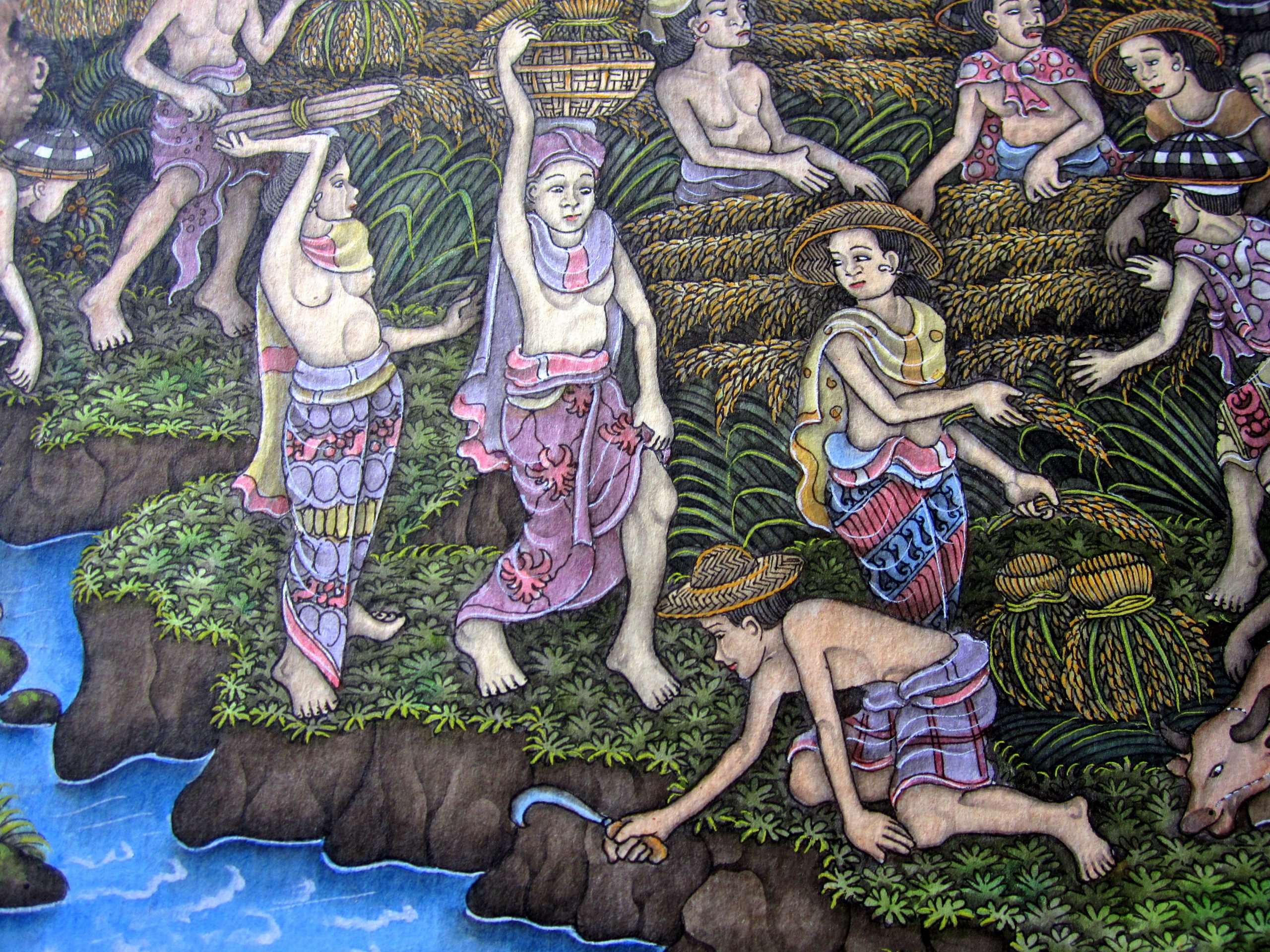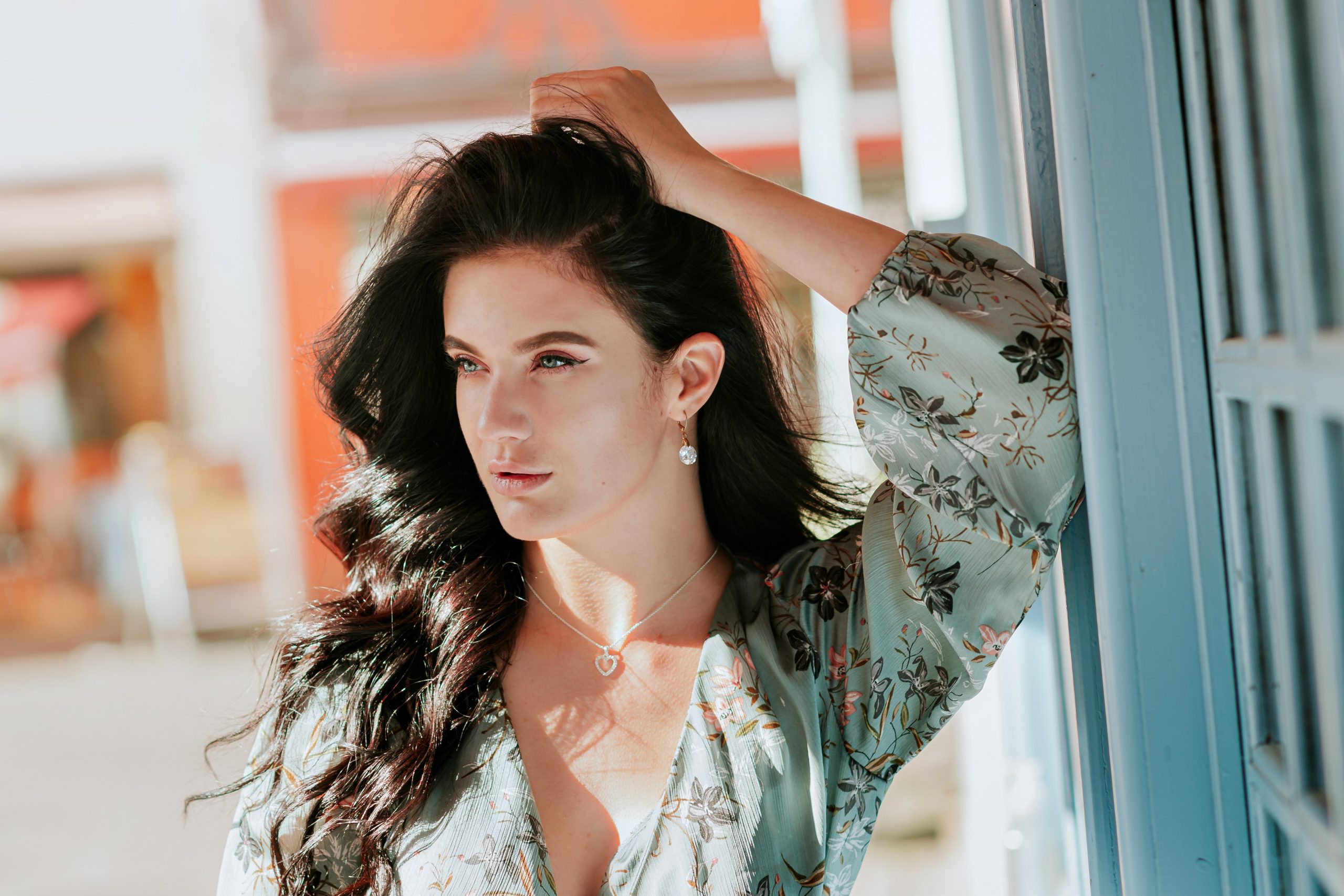
When Taylor Swift dropped the cover for her upcoming album “The Tortured Poets Department,” classic and silent films fans were swirling over the title of one song in particular: “Clara Bow.” Articles sprung up explaining who exactly Bow was (although many erroneously labeled her the original film flapper; that moniker belongs to Olive Thomas and Colleen Moore). It’s wonderful to see Bow’s legacy resurrected by one of the world’s biggest superstars, but Swift is far from the first contemporary musician to find inspiration in the early days of cinema.
There were many popular songs written during the silent film era, like Joseph H. Santly’s “At the Moving Picture Ball,” that were inspired by the stars of the time. However, just a few decades after the heyday of silent film was torpedoed by the advent of synced sound, the memory of many of these nitrate gods and goddesses was starting to fade. In 1972, Ray Davies of The Kinks wrote about this duality of fame in the song “Celluloid Heroes,” lamenting “You can see all the stars as you walk down Hollywood Boulevard / Some that you recognize, some that you’ve hardly even heard of / People who worked and suffered and struggled for fame / Some who succeeded and some who suffered in vain.” Among the stars named were silent film legends Greta Garbo, who was still alive at the time, and Rudolph Valentino, who was very much dead.
The ill-fated matinee idol Valentino died in 1926, at the height of his fame. Only 31 years old at the time, his death caused mass hysteria, and some fans to this day still visit his grave every year on the anniversary of his death. His legacy also lives on in the lyrics of several songs. In “Don’t Look Down,” Iggy Pop croons, “I went this morning to the cemetery / To see old Rudy Valentino buried / Lipstick traces on his name, you know / He never looked down.” The song was also later recorded by David Bowie. In the Prince-penned “Manic Monday,” written sixty years after Valentino’s death, The Bangles dream of “kissin’ Valentino by a crystal blue Italian stream” before their alarm clock rudely awakens them on the blighted Monday morning. A few years earlier the Great Lover was evoked in the music video for the 1982 Adam and the Ants song “Prince Charming,” where singer Adam Ant dresses up in the idol’s famous sheik garb.
Silent film homages were found throughout pop music in the 1980s, especially in the work of New Wave, Gothic Rock, and New Romantic musicians. The music video for “Arabian Knights” by British rock band Siouxsie and the Banshees references the Douglas Fairbanks romantic epic “The Thief of Bagdad.” And in fact, lead singer Siouxsie Sioux’s whole look has been likened to silent film vamps like Theda Bara and Louise Brooks. In the last few decades, her bandmate Steven Severin has written and performed live scores for silent films, including Germaine Dulac’s “The Seashell and the Clergyman” and Carl Theodor Dreyer‘s “Vampyr.” I was lucky enough to see the latter live once and it was truly life changing.
Throughout the early part of the 1980s, several bands created music videos that integrated silent aesthetics or clips from the films themselves. The music video for “Mask” by the band Bauhaus was heavily influenced by German Expressionism. Shot guerilla style in an abandoned factory and in the woods outside the Spencer family’s country estate, the video sees vocalist Peter Murphy raised from the dead. The music video for “Because I Do” by X is similarly styled like a silent horror film, this time with period-accurate intertitles and everything. A silent film romance comes to life a la “The Purple Rose of Cairo” in Kittitian-English singer-songwriter Joan Armatrading’s “Drop the Pilot,” although the song predates the film by several years.
The music video for “Freeze Frame” by the J. Geils Band features clips from Buster Keaton classics “Steamboat Bill Jr” and “One Week,” among other silent films. Hot Chocolate took a similar approach with their music video for “It Started With A Kiss,” using clips of great silent film kisses including “The Lodger,” “Don Juan,” “Nosferatu,” and “Four Horsemen of the Apocalypse.” A few years later, Cyndi Lauper used footage of the 1923 version of “The Hunchback of Notre Dame” with Lon Chaney to illustrate how “some boys take a beautiful girl and hide her away from the rest of the world” in her music video for “Girls Just Want To Have Fun.” Even heavy metal band Iron Maiden got into the trend, using footage from “The Uncovered Wagon,” a parody of classic western epic “The Covered Wagon,” in their video for “Run To The Hills.”
In 1984, the twin flames of pop music and silent film reappraisal hit a fever pitch when Italian music producer Giorgio Moroder outbid David Bowie for the rights to Fritz Lang’s “Metropolis.” Originally, Moroder intended just to write a new soundtrack for the landmark sci-fi flick, but quickly realized a full restoration was in order. Working in consultation with the Munich Film Archive’s archivist Enno Patalas, Moroder’s 83-minute restoration included new tinting, additional special effects, and placed the intertitles as dialogue text directly on the footage of the actors.
This version, which still plays at rep cinemas to this day, includes songs performed by Pat Benatar, Jon Anderson, Adam Ant, Cycle V, Loverboy, Billy Squier, Freddie Mercury, and Bonnie Tyler, the later of whom received a Grammy nomination for her rendition of “Here She Comes.” Mercury recorded “Love Kills,” his solo contribution to the soundtrack, in exchange for using footage from the film in Queen’s music video for “Radio Gaga,” which ultimately was nominated for an MTV Video Music Award.
Along with Moroder’s controversial rock update of “Metropolis,” Lang’s film has inspired countless other musicians, including Madonna’s David Fincher directed music video for “Express Yourself,” Janelle Monáe’s conceptual series of albums and visuals about android Cindi Mayweather, last year’s “Renaissance: A Film by Beyoncé,” and most recently “This Is Me… Now: A Love Story” by Jennifer Lopez.
Although silent film aesthetics in music may have peaked in the 1980s, they continued to be an inspiration for musicians over the next few decades. The life of the luminous Louise Brooks inspired the song “Pandora’s Box” by British band Orchestral Manoeuveres in the Dark, who also used footage of the actress in Georg Wilhelm Pabst’s iconic film of the same name for their accompanying music video. Brooks was also the subject of Natalie Merchant’s 2014 single “Lulu;” the music video leans heavily on footage from the Pabst film. Singer-songwriter Rufus Wainwright wrote a whole album, “All Days Are Nights: Songs for Lulu,” dedicated to Brooks, calling the songs “a sacrifice to her spirit.”
Cowboy William S. Hart, one of the most popular western stars of the 1910s and 1920s, is featured prominently in the music video for Kirsty MacColl’s “Don’t Come the Cowboy with Me Sonny Jim!” (along with some footage of Shirley Temple, taken from the pre-code sound shorts series “Baby Burlesks”). Evoking that same era, country guitarist and singer Junior Brown created his own slapstick Keystone Cops adventure for the “My Wife Thinks You’re Dead” music video.
Similarly, the music video for British musician White Town brings the love story in their song “Your Woman” to life with silent film techniques, including extensive use of iris shots and experimental match cuts. The video even includes a direct homage to Luis Buñuel’s 1928 surrealist film “Un chien andalou.” The video for the Stone Temple Pilots song “Interstate Love Song” uses an early cinema pantomime style for its love story, while also evoking the era through color tinting. Reaching even further back, Irish rock band U2 recalls the pre-cinema chronophotography of Eadweard Muybridge in their music video for “Lemon.”
The early cinema of Georges Méliès inspired many music videos, including two of the most iconic from the 1990s. His 1907 film “The Eclipse, or the Courtship of the Sun and Moon” informed the playful chaos of The Cure’s “Friday I’m In Love” video. A few years later the French filmmaker’s pioneering 1902 sci-fi film “A Trip to the Moon” was the main visual inspiration for “Tonight Tonight” by Smashing Pumpkins (who had earlier named their debut album after actress Lillian Gish). Directed by Jonathan Dayton and Valerie Faris, the video was shot in Los Angeles over a three-day period, and the fimmakers actually had trouble finding period-specific costumes because, according to Dayton, “Titanic” director James Cameron had rented “every turn-of-the-century costume and prop in every costume house” in the city. Despite this setback, the music video became instantly iconic, winning six awards at the 1996 MTV Video Music Awards, including Video of the Year. A decade later, singer-songwriter Regina Spektor also found inspiration in Méliès, creating an homage to his 1909 film “Le Locataire Diabolique” with her music video “Us.”
Spektor wasn’t the only Y2K-era musical artist to mine silent film aesthetics for their work. The music videos for both “Living Dead Girl” by Rob Zombie and “Otherside” by the Red Hot Chili Peppers allude to Robert Wiene’s German Expressionist horror film “The Cabinet of Dr Caligari. Zombie’s video, which he co-directed with Joseph Kahn, directly recreates moments from Wiene’s film. However, the RHCP video, which was directed by Dayton and Faris, borrows from Wiene’s film, but also brings in elements of Cubist and Surrealist art, as well as the work of graphic artist M. C. Escher. Georgian-born British singer Katie Melua recorded a song called “Mary Pickford,” which was a pastiche of the Joseph H. Santly song mentioned earlier. Melua’s accompanying video features clips of Pickford along with the other founders of United Artists, Douglas Fairbanks and Charlie Chaplin.
Even the boy band *NSYNC dabbled in silent film ephemera, with Justin Timberlake donning a Chaplinesque persona to woo a lady friend in the Herb Ritts–directed music video for their 2001 single “Gone.” The use of silent film iconography here, in retrospect, gives the video a bittersweet irony, as it is now considered the group’s swan song before Timberlake embarked on his solo career. The slapstick comedies of Chaplin also inspired the music video for Australian Yolanda Be Cool’s single “We No Speak Americano.”
Also in the 2000s, the musical styles of the 1980s came roaring back with post-punk revival bands dominating the airwaves. In the music video for Scottish band Franz Ferdinand’s “The Dark of the Matinée,” the band, dressed as schoolboys, watch clips from classic films including snippets of silent westerns, silent action serials, the Douglas Fairbanks swashbuckler “The Black Pirate,” and the 1936 talkie serial “Flash Gordon” (not a silent film, but still pretty cool). Along with these newer revival acts, bands from the era like Blondie mounted comebacks. The music video for their 2003 single “Good Boys” was heavily inspired by the 1924 film “He Who Gets Slapped,” starring Lon Chaney as the titular sad clown. Chaney may also be the inspiration behind a mask worn by The Weeknd during his most recent tour, at least according to some eagle-eyed fans.
Although The Lumineers used an image of the original vamp Theda Bara for the cover of their 2016 album “Cleopatra,” the band did not include any silent film imagery in the music video for the track. However, the visual imagery of the silent film era still sparks filmic creativity for even more artists. The music video for Cage The Elephant’s 2015 song “Mess Around” is completely composed of a melange of clips from restored Georges Méliès’ films, many of which include hand-painted frames. Auteur Paul Thomas Anderson was inspired by both the comedic tumbling and romantic sweetness of slapstick superstar Buster Keaton for “Anima,” his visual companion to Thom Yorke’s 2019 album of the same name. Anderson told Variety he would constantly yell “More Buster Keaton, more Buster Keaton!” while on set.
American synth-pop duo Aly & AJ released a music video for their single “Joan of Arc on the Dance Floor” that puts an ironic twist on Carl Theodor Dreyer’s “La Passion de Jeanne d’Arc,” casting both singers in the role played by Falconetti. The duo sought to draw parallels between the famous French martyr and the political climate in early 2020, dedicating the video to Christine Blasey Ford and Anita Hill. A year later, rapper Flo Milli alluded to feeling an affinity with the newfound freedom of Jazz Age flappers, channeling them in the video for her song “Roaring 20s,” in which she is styled like Josephine Baker in the 1927 film “Siren of the Tropics.”
There is not one easy answer to explain why so many artists over so many decades have connected to the medium of silent film, but if I were to hazard a guess it is because of the effervescence of the era. These movies look cool. These filmmakers were playing around with light and montage and color at first with the giddiness of experimentation, and later with the confidence of masters. Also, to paraphrase Norma Desmond, the stars had faces then. They were larger than life, the stuff of dreams and myths that united millions of people with their artistry and magic.
Which brings us back to Taylor Swift. How will her song “Clara Bow” evoke the original “It girl”? Maybe she’ll draw parallels between the biography of the immortal film icon and herself, like she did with socialite Rebekah Harkness in the song “The Last Great American Dynasty” from her Grammy-winning album “Folklore.” We’ll have to wait for the release of “The Tortured Poets Department” on April 19th to find out for sure. Until then, you can get familiar with the work of Clara Bow herself by watching her films “Children of Divorce,” “It,” and the very first best picture winner, “Wings” on Tubi, or reading David Stenn’s essential biography, Clara Bow: Runnin’ Wild.




